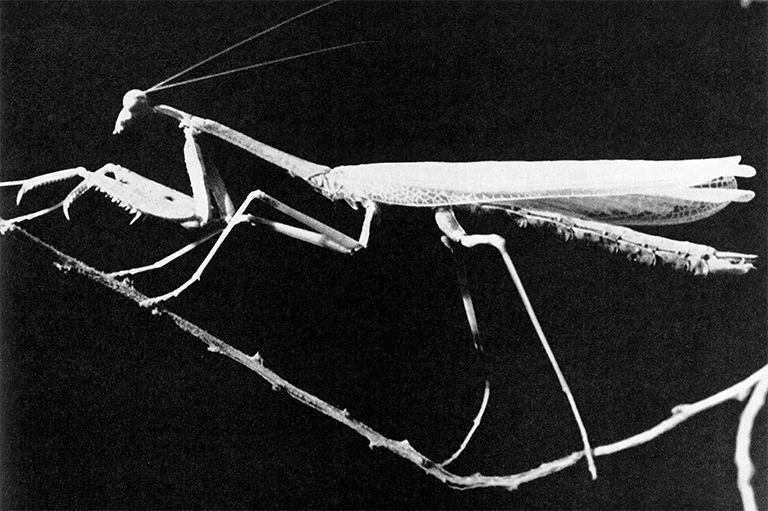Weaving a Dangerous Web

In the insect world some pests pose a significant danger to humans and to their fellow bugs, while in other cases some can even be a danger to themselves.
For many Canadians, insects are as much a part of summer as backyard barbecues and trips to the lake. As many of us know from experience, insect bites and stings can be an unwelcome and painful nuisance.
In the Spring 1963 issue of The Beaver, writer and nature photographer Redvers Cavendish turned his lens on a pair of insect predators found in Western Canada to produce the story and pictorial “Insect Enemies.”
The black widow spider, which first appeared along the southern borders of Alberta and Saskatchewan in the mid-twentieth century, is a pest that can cause serious pain and suffering. “A bite from one of these spiders is always dangerous and may even be lethal,” Cavendish writes.

The article goes on to explain how black widow spiders are in turn threatened by other insects such as the praying mantis, which, Cavendish writes, “deserves protection in Canada” for the role it plays in eating “pests like flies and caterpillars.”
It turns out, however, that the biggest threat to praying mantises are, arguably, other mantises. In mating season, the female praying mantis mates with a male partner and then proceeds to “devour” the male once mating is complete. And sometimes, after laying their eggs, female mantises will then proceed to “destroy themselves.”
“They start by eating their back feet, continue to the abdomen, where they die and fall to the ground,” Cavendish explains.
The article may seem a bit morbid, but it features strong and compelling photography. Cavendish, who specialized in “microphotography,” offers extreme close-ups of both the black widow spider and the praying mantis in a series of vivid photos.
Themes associated with this article
Advertisement




